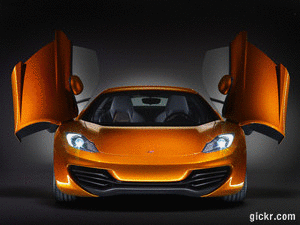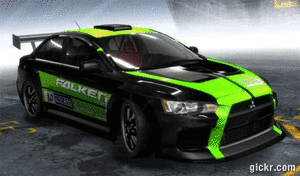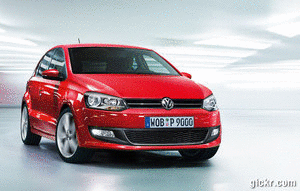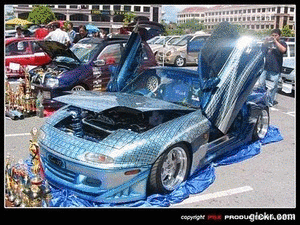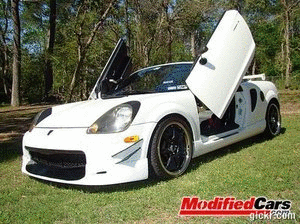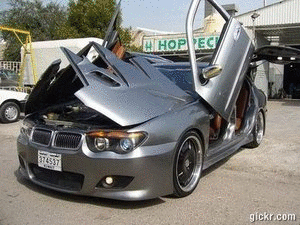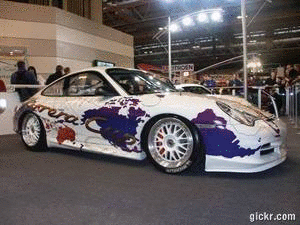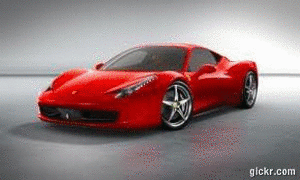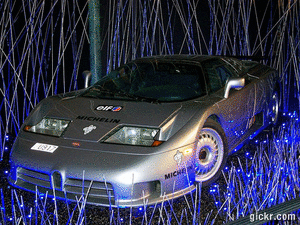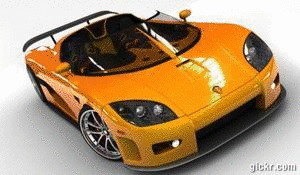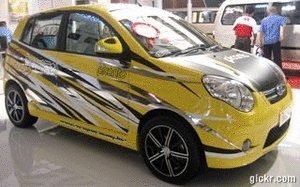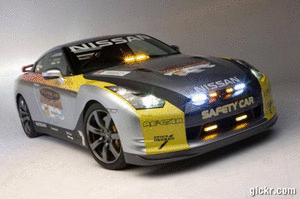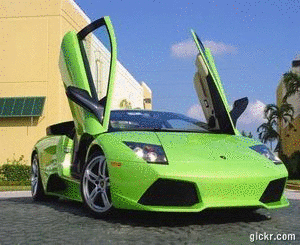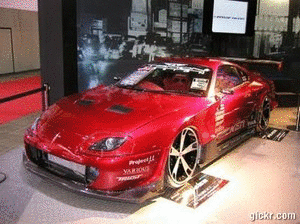Ford has given the green light only once: in 1968, has approved a special management Mustang - a car that has offered nothing in its efforts to be the best all-around performance street machine ever built by Ford Motor Company. That car became the 1969 Ford Mustang Boss 302, and is still one of the world's most sought after examples of American performance.
Forty-two years later, Ford gave the green light again.
The team of Ford engineers, designers and stylists - all Mustang enthusiasts in the heart - that created the revolutionary Mustang GT 2011 has collected a new model in its purest form, strengthening, lightening and refining each system to create a race car with a license plate. Its name: the 2012 Mustang Boss 302.
"The decision to build a modern manager, was not taken lightly," said Derrick Kuzak, group vice president, Global Product Development. "The entire Ford team felt it was time, and with the right ingredients for 2011 Mustang world-class support a successful race to race, worthy successor of the original 302nd boss for us it meant a Mustang production could exceed one of the best in the world - the 2010 BMW M3 -. In the lap times at Laguna Seca We met our expectations. "
Sounds like the Boss
While the team of powerplant performance defined that provide an ideal balance for the chassis, another team makes the kind of car owners and enthusiasts of sounds to expect from a Mustang Boss.
Up front is a specific pattern induction system tuned to supply the engine with minimal restrictions. Tube induction retuned gives concrete phonetic sign of what is happening under the hood. And engineers boss exhaust system really had fun.
"When the exhaust system is to consider three aspects: the legal noise limit, pressure, which can rob power and ground space," said Shawn Carney, Mustang NVH engineer. "As the 2011 Mustang GT exhaust is already so free-flowing - it was well below our counter-pressure goals - we had an excellent performance, we were able to tune the exhaust system has a unique sound, combined by taking a hurry, the exhaust system is actually surrounded by the sound driver V8 ..
Each boss has a unique system of quad exhaust: two shops out in the back looks like a regular Mustang GT. The other two companies access to both sides of the cross exhaust, send exhaust through a set of metal discs that act as control elements by the end of the tube opposite the opening of the rear wheel. Visually subtle, the flow of exhaust side pipes but little noisy exhaust, which gives an aural experience unlike any other Mustang - and give the house an additional tuners for change.
"We added the mitigation of the discs to meet the legal standards, but we knew that the buyers could operate these vehicles in situations where noise regulations are not a problem," said Carney. "The record is and includes a removable plate spacer size of the replacement exhaust valve relief if an owner wants to add a set of electric valves, just undo the two screws on each side. The blade and the spacer disk and valve slide right in and secondary pipes are adjusted so that drivers can operate in open and sound levels are comfortable living -. very aggressive, but to make a daily "
Carney also said the idea behind the unusual step of assembling a relaxation component OEM aftermarket. "We are engineers from Ford, but we are also passionate," he said. "We understand the mods are a part owner of the Mustang experience, so we try to help as much as we can."
Suspension and Steering
In accordance with the mandate to provide the patron better handling Mustang ever, the system already strong Mustang GT suspension has been refined. Higher coil spring rates of the four corners, stiffer suspension bushings and larger rear stabilizer bar all contribute to the mission of the road race, and Boss models are lowered by 11 millimeters at the before and 1 inch in the rear compared to the Mustang GT. The real key to handling, is in adjustable shocks and struts, is standard on all models Mustang Boss.
"We had five riders for the configuration of shock," said Brent Clark, Mustang team supervisor of vehicle dynamics. "It's softer, two is the factory setting and five is the strongest, and we have provided a wide range of settings. A client can take to the track in the configuration of two, crank up to five a better response in the track, and then mark up a house for a relaxed What is unique is that drivers find -. thanks to the way the suspension works as a complete system - the smoothest fit is too loose and firmer setting is not very controlled and each step only provides additional levels of control. "
Also unique is a method of adjusting a shock. Ditching the weight and complexity of electronic wizardry, the team chose Mustang to compete in a traditional style with practical-regulation - the same Gabriel shocks available in the original Boss 302
"The adjustment of unloading is right at the top of the tower discharge, integrated into the stem and easily accessible from under the hood or trunk," said Clark. "You just take a small flat screwdriver, turn the adjustment screw between one and five, and head back on the track."
In addition to the suspension system is speed-sensitive electronic control was adjusted to maximize feedback and road feel to the driver. The driver is also an opportunity to fine tune the steering feel to his taste by choosing one of three settings in the menu panel: Comfort, Normal and Sport modes help provide monitoring and precise control when desired without compromising low-speed maneuverability in parking situations and everyday use.
Similarly, the employer receives unique traction control (TCS) and electronic stability control (ESC) settings to help drivers maximum performance in either the street or track. Both systems can be completely disabled in situations where using the track-controlled pilot competition up and fully engaged for maximum safety while driving or drive under normal conditions less than ideal. Through sport mode allows the driver to push harder to track their vehicles without completely disable security systems for a more aggressive appearance before the TCS and ESC systems act.
Exterior and interior
Changes in the appearance of the Boss Mustang subtle but unmistakable. True to its heritage breed race, every component that could support the aerodynamic and engine / brake performance was designed to make the car more competitive, chief designer Darrell Behmer while the sophisticated style reminiscent of 1969, the boss of fashion today.
"We reach out to conservatives as a legend," says Behmer. "We took design cues from the car owner 69 of the street and threatening to Bud Moore / Parnelli Jones racing cars and carefully updated 2012 to give the child the right attitude bad it is undoubtedly a Boss Mustang."
To set the Boss on the other, each car has a roof panel is black or white, the color coordinated Page C-stripe. Exterior colors are available up to Orange, Performance White, Kona Blue Metallic, Yellow Blaze Tri-metal layer and the red race.
Up front, grille and fascia are characterized by the openings closed with fog light and less aggressive splitter, a version of the model used - and proven - the owner of the 302R race car. The front splitter is designed to operate at high speeds through the effective management of air into and around the car. Helps to reduce drag and lift under the front body, forcing the air more effectively through the cooling system specific Boss. At the rear of the car, the wing was chosen to complete the treatment front and minimize the total drag.
"What we have, after the head elevation has been reduced with better overall balance," said Pericak. "We had to keep the car glued to the street or the track at high speed without increasing resistance and affect the speed and fuel consumption The end result is a streamlined package that uses the treatment front, rear skirts side, not to show, but the effect -. balance and stability of this car all the way to its top speed of 155 mph is simply outstanding. "
Inside, the only head of the steering wheel Alcantara suede covers the full complement of standard seats which are upholstered in suede fabric similar to a central place to keep the passengers securely in place. Boss customers who want to experience the best places to choose a package that includes the Recaro buckets, designed by Ford SVT in collaboration Recaro high-performance Mustang models, and shared Boss and GT500.
The interior receives a boss with this sudden hearing was deleted. Eleven pounds of soundproofing material was removed to allow residents have additional inputs, the engine and exhaust.
"Boss is dedicated to the word here, and we were not able to put that name on the new Mustang until we were all that was going to make this car worthy successor," said Pericak. "We were both going to do it properly, or does not do it at all - neither team will label boss and wheel package."
